I went out to this site the other day but it has taken me ages to actually put information against the photos and attempt to start this post. What an amazing site. I had to gain permission for 2 out of the three dispersal sites before being allowed free reign to walk the sites. The third - i ended up being directed to the estate office in Leckford and hopefully if i wasn't fobbed off, i should receive a call to get a visit arranged to view the site of the hangars and other buildings next to Leckford Dairy. The last thing i wish to do is create an issue for anyone else who wishes to view the site, also i do not wish to actually get arrested for trespass. Due to the current issues surrounding milk pricing the trespass issue could be fairly sensitive for me being in the security industry and working for a retail supplier.
History taken from Wiki
RAF Station Chilbolton is a former World War II airfield in Hampshire, England. The airfield is located approximately 4 miles (6.4 km) south-southeast of Andover; about 62 miles (100 km) southwest of London
Opened in 1940, it was used by both the Royal Air Force and United States Army Air Force. During the war it was used primarily as a troop carrier airfield for parachutists. After the war it was used for jet aircraft testing before being closed in 1946.
Today the remains of the airfield are located on private property being used as agricultural fields.
RAF Fighter Command use
Chilbolton airfield was opened in September 1940 as a satellite of RAF Middle Wallop and was used as a relief landing ground. At first it was developed piecemeal with the addition of the necessary facilities that took it towards existence as an independent base. It then hosted its own Hawker Hurricane squadrons which took part in the Battle of Britain. RAF 238 Squadron operated throughout the Battle of Britain from Middle Wallop and St Eval as part of 10 Group RAF Fighter Command, moving to Chilbolton in September 1940 with Hurricane 1’s. During the Battle of Britain many sorties were flown covering Southampton to Bristol. Once the battle had been won and therefore the threat of invasion had passed major Luftwaffe raids ceased. Several Supermarine Spitfire & Hurricane squadrons came and went, none stayed very long. By late 1941 Chilbolton had been upgraded with the addition of a perimeter track and several fighter concrete dispersal pens around it. By November 1941 it was placed into Care & Maintenance as there was no use for it by then as the Battle of Britain had ended and there were sufficient airfields in the area to continue the war without it.
RAF Units stationed at Chilbolton:
238 Sq, Hurricane I, arrived 30 September 1940, departed 20 May 1941
Glider Pilots Exercise Unit, Tiger Moth/Master/Hotspur arrived Dec-Jan 1941
238 Sq, Hurricane IIA, arrived 1 February 1941, departed April 1941
308 Sq, Spitfire IIA, arrived 31 May 1941, departed 24 June 1941
501 Sq, Spitfire IIA, arrived 25 June 1941, departed 5 August 1941
504 Sq Hurricane IIB, arrived 11 August 1941, departed 26 August 1941
245 Sq, Hurricane IIB, arrived 1 September 1941, departed 17th Nov 1941
245 Sq, Hurricane IIB, arrived 23 Nov 1941, departed 19 Dec 1941
184 Sq, Hurricane IID, arrived 1 March 1943, departed 11 March 1943
174 Sq, Hurricane IIB, arrived 1 March 1943, departed 11 March 1943
America came into the war with the bombing of Pearl Harbor by the Japanese at the end of 1941 and the Allies began preparations for the invasion of Europe. RAF Chilbolton was eventually allocated to the United States Air Force (USAF) and played host to Army Co-operation Command units.
Overview
RAF Chilbolton Stands on a plateau 91 metres above the River Test and Chilbolton village in Hampshire.
The site had been used during the 30s by private light aircraft. In 1936 the Ministry of Works marked out the site for a prospective airfield and was ‘under construction’ in 1938. The airfield was used by RAF 11 group Hurricanes during the Battle of Britain and the RAF continued to use the airfield until it was allocated to the USAAF in November 1942. Originally the airfield consisted of three grass runways. However UK military airfields were constantly upgraded throughout WWII.
The biggest change was in Spring 1943 when RAF Chilbolton was rebuilt to British Class A airfield bomber standard, the main features were 150 ft wide hardened concrete runways, the main runway length being at least 6000 ft, to allow operation of all current and planned aircraft and at least two T2 hangars (240 feet long by 115 feet wide by 29 feet high. The existing concrete perimeter track was widened to the ‘class a standard’ width of 50 feet (15m) and made to fully encircle the runways. 48 large hardened concrete dispersal pads or hard-standing were built on the perimeter track infield, each capable of taking a large WWII bomber. A large B1 aircraft production hangar span 120 ft, length 175 ft made of steel stanchions and cladded with corrugated iron painted black with roof windows, was added next to one of the T2’s to allow for the rebuilding of seriously damaged planes by a civilian workforce. The three concrete runways were 5,400 ft (12/30), 4,814 ft (02/20) and 4,200 ft (07/25). The main runway was not able to meet the full ‘class A standard’ of 6000 ft for geographical reasons. It couldn’t be lengthened due to the pronounced slope of the land.
The ground support stations were constructed largely of Romney and Nissen huts of various sizes. The main support station, called Stonefield Park was where the group and ground station commanders and squadron headquarters and orderly rooms were located. Also on the various ground stations were mess facilities, chapel, hospital, mission briefing and debriefing, armory, life support, parachute rigging, supply warehouses, station and airfield security, motor pool and the other ground support functions necessary to support the air operations of the group. These facilities were all connected by a network of single-track support roads, mostly on preexisting straight 'drovers roads'.
There were several technical sites scattered around the airfield, the largest consisting of a B1 and T2 hangar on a self-contained site including canteen and latrines, built and run by the Ministry of Aircraft Production (MAP), using a civilian workforce and involved in repairing airframes of seriously damaged aircraft. Other technical sites were composed mostly of large Romney huts and were connected to the rest of the airfield by straight single-track roads. Here essential field maintenance to keep the aircraft airworthy, such as spark plug cleaning, propeller repairs, tyre replacement, etc. could be performed. A T2 hangar was also used for more extensive maintenance and repair. Air depot personnel performed depot-level maintenance on aircraft. The Ammunition dump was located on the south side of the airfield, outside of the perimeter track surrounded by large dirt mounds and concrete storage pens.
There were 11 dispersed accommodation sites dispersed around the airfield, mostly to the East and all well within a mile of the perimeter track, mostly using clusters of Nissen huts, but also many purpose built RAF buildings of the period such as gymnasium, squash court, decontamination building etc. The Huts were either connected, set up end-to-end or built singly and made of prefabricated corrugated iron with a door and two small windows at the front and back. They provided accommodation for 2.841 personnel, including communal and a sick quarters.
During airborne operations, when large numbers of airborne parachutists were moved to the airfield, tents would be pitched on the interior grass regions of the airfield, or wherever space could be found to accommodate the airborne forces for the short time they would be bivouacked at the station prior to the operation.
USAAF use
Chilbolton was known as USAAF Station AAF-404 for security reasons by the USAAF during the war, and by which it was referred to instead of location. Its USAAF Station Code was "CB".
5th Tactical Air Depot
During the course of this construction. Chilbolton was selected for the site of an aircraft maintenance depot and this was established on the north-east side with large Nissen and Romney buildings erected for workshops.
It was determined that the USAAF would operate six tactical air depots in the UK and the locations had already been decided before the Ninth Air Force was established in the UK. However, the conditions at one was found to be unsatisfactory for the operation of Republic P-47 Thunderbolts and it was decided to shift this depot to Chilhollun. The first USAAF personnel arrived in December 1943 and by January the 5th Tactical Air Depot, and its 10th and 86th Air Depot Groups, were in residence.
During the early months of 1944, the P-47 Thunderbolt became a very common sight in the vicinity of Chilbolton as the 5th TAD prepared new P-47s for operational units, made theatre modifications and carried out some maintenance on the type for Ninth Air Force units, major maintenance being carried out at Base Air Depot 1 (BAD 1), Burtonwood.
368th Fighter Group
On 1 March 1944 the 12th and 15th Tactical Reconnaissance Squadrons from the 67th Reconnaissance Wing, flying Spitfires and Mustangs, moved in from RAF Aldermaston to make way for a C-47 group, only to be ejected two weeks later when a new fighter group arrived, The numbers of P-47s increased dramatically on 15 March when Colonel Gil Meyers brought his 368th Fighter Group in from RAF Greenham Common which was also required for transports. At times there were more than 150 P-47s at Chilbolton, the 368th's three squadrons having a combined total of more than 70. The 368th had the following fighter squadrons and fuselage codes:
395th Fighter Squadron (A7)
396th Fighter Squadron (C2)
397th Fighter Squadron (D3)
The 368th was a group of Ninth Air Force's 71st Fighter Wing, IX Tactical Air Command. Recipient of the Presidential Unit Citation, the 368th was the highest scoring Ninth Air Force P-47 only unit with 149 victories. It was the first USAF unit to attack V-1 buzz-bomb sites, the first to use Napalm bombs and pioneered the role of pilots as forward air controllers.
The group had flown its first combat mission the day before the move to Chilbolton and armed patrols, escort and fighter-bombing missions followed, although ground attack was their primary duty. Before the launch of Operation 'Overlord' losses were light, but intensive action in early June brought an increase in the numbers of P-47s failing to return to Chilbolton. Even so, the total 12 missing in action during the 368th's stay was considerably lower than the losses of many other P-47 groups. A total of 15 enemy aircraft were credited shot down while flying from Chilbolton, the most extraordinary combat being that of Major Randall Hendricks of 397th Fighter Squadron who, in quick succession, shot down four Focke-Wulf Fw 190s he had surprised on 12 June. His fifth victory came 10 days later, making him the first post-invasion Allied ace. The Group produced two other aces: Lt. Col. Paul P. Douglas of the 396th FS (8), and Captain William Garry of the 395th FS (6).
Chilbolton was one of the two Thunderbolt bases furthest removed from the battle-front consequently, these were the groups that the Ninth Air Force earmarked for early movement to the Advanced Landing Grounds (ALGs) being carved out of farmland on the Normandy bridgehead. On 16 June the 397th FS started to use the A-3 ALG at Cardonville, thus becoming the first Ninth Air Force unit to transfer to the Continent to provide tactical air support in support of U.S. First Army. The main party of the group took up residence on 20 June, although Chilbolton was still used as a reserve base for a few days.
The 368th moved across the continent, finally winding up at Frankfurt am Main (Y-73), Germany on VE-Day. The group served with the army of occupation, being assigned to United States Air Forces in Europe. It was inactivated in Germany on 20 August 1946at Straubing, Germany.
Meanwhile, the 5th Tactical Air Depot continued to operate from Chilbolton, although its 10th ADG transferring to France in late July. The 86th ADG followed in September with most of the other units.
442nd Troop Carrier Group
Following the departure of the 368th FG to the continent, C-47s from various troop carrier groups used Chilbolton as an air evacuation station, ferrying in casualties from Normandy and taking supplies out on the flight from Chilbolton. From early September, personnel of the 442d Troop Carrier Group based at RAF Weston Zoyland moved in support equipment to Chilbolton as the airfield had been selected as an advance base for the group's participation in the airborne landings in Holland.
On 11 September the group's C-47s arrived. Carrying parachutists of the 101st Airborne Division two flights of 442nd C-47s took off for drop-zones near Veghel and Son respectively on 17 September. Both formations met heavy flak and just after the drop had been made two of the first flight's aircraft were shot down. The second flight also met fierce AAA fire with two aircraft being lost and seven others badly damaged.
The next day, two flights of 40 C-47s, each towing CG-4A Waco gliders took off, this time faring better, with only one aircraft lost in a ditching. Things did not go smoothly on the 19th when another 40 C-47s towing 40 gliders experienced considerable difficulty in bad weather and only 28 of the latter were delivered to the landing zone. Seven gliders went into the sea and two C-47s were lost. A second flight of 41 C-47s with gliders met still more problems with none of the gliders reaching the Son DZ and two C-47s lost to flak.
There was reduced effort on 20 September when 20 planes, operating from RAF Greenham Common, dropped supplies, and 12, from RAF Ranisbury dropped paratroops to the 101st Airborne. Thereafter, the group was returned to RAF Weston Zoyland having sustained one of the higher aircraft losses of all the fourteen C-47 groups taking part in 'Market'.
Chilbolton continued to be retained by the USAAF for use by transports as a staging base for cargo operations to and from the Continent and it was not returned to the RAF until March 1945 by which time most of the C-47 groups had been transferred to bases in France.
RAF Training Command
In the hands of the RAF, Chilbolton played host to a fighter Operational Training Unit - No. 41 - for the rest of World War II, and then to several different fighter squadrons equipped with Supermarine Spitfires and Hawker Tempests as the RAF reduced its strength at the end of the war.
41 OTU, Hurricane/Spitfire/Master/Martinet arrived March 1945, disbanded 26 June 1945
26 Sq, Mustang I/Spitfire XIV, arrived 23 May 1945, departed 20 August 1945
183 Sq, Spitfire IX, arrived 17 June 1945, departed 8 October 1945
247 Sq, Tempest F2/Typhoon Ib, arrived 20 August 1945, departed 7 January 1946
222 Sq, Tempest V, arrived 10 August 1945, departed 15 August 1945
54 Sq, Tempest F2, arrived 15 November 1945, departed 28 June 1946
183 Sq Tempest II, arrived 15 November 1945, disbanded 15 November 1945
[edit]Into the 'Jet Age'
In March 1946, Chilbolton became the first RAF station to operate de Havilland Vampire jets when No. 247 squadron converted to Vampire FB1's, but by the late summer that year the station was on care and maintenance.
247 Sq, Tempest F2/Vampire F1, arrived 16 February 1946, departed 1 June 1946
247 Sq, Vampire F1, arrived 12 June 1946, departed 27 June 1946
[edit]Civil use
With the facility released from military control in 1946, Vickers Supermarine selected the airfield as a base for conducting flight development programmes of their jet prototypes and development aircraft, remaining for the best part of ten years. Supermarine Attacker, Supermarine Swift and Supermarine Scimitar were developed there as well as many early experimental swept wing jet fighters. The Spitfire T Mk IXs, the very last Spitfire built, a 2-seat trainer was also flown and developed at Chilbolton to be exported to India and Eire.
Folland Aircraft moved in to the other side of the airfield to conduct similar work on their products, chiefly the Midge and Gnat, but were gone by the end of 1961. With their departure, the wartime airfield began to be dismantled, with large sections of runway, perimeter track and loop hardstands being removed for hardcore.
The next organization to take an active interest in the site was the Space Research Council which set about building an observatory with what was to become a prominent local landmark - a radio telescope, known as the Chilbolton Observatory, which was built almost in the centre of the airfield, on the wartime main runway. When constructed, the north end of the runway was removed, with a two lane access road replacing the runway and connecting to the local road network. Various other enterprises flourished or faded in the buildings on the periphery of the airfield.
Flying continued during the 1980s when helicopters and light aircraft serving a field spraying organization were in residence using a grass strip built parallel to the main north-south 12/30 runway. Today, the perimeter track has been largely reduced to a single-lane farm road as much of the airfield has been returned to agricultural use. A large section of the 07/25 secondary runway still exists, although reduced to half width. In aerial photography, however, much of the former wartime airfield's runways and hardstands can be seen as disturbances on the landscape, giving a ghostly appearance to the area.
Starting off at the private industrial site called Stonefield Park i knew this would be the best place to start from, getting there very early, asking and getting permission from an initially sceptical person and then allowed to freely wander the site. Dispersal buildings, air raid shelters, Nissan huts. There was a lot to document.



Canteen Block


Rear of the Officers Mess and Canteen block.

Internal of a Stanton shelter



Access road from the main gate.


In total there are 13 Stanton Air raid shelters in the compound. Each with sufficient capacity to hold 30 personnel.



Escape hatch to a Stanton shelter.




The Squash Court.



The Sgt's Mess on the left with its associated air raid shelter. In total there are two shelters running along side the Mess.

The rear of the kitchen area and water tower.




Circuit leading to the double fuel compound.



The Gym













The Latrines










Airmen's Shower / Ablutions and decontamination block

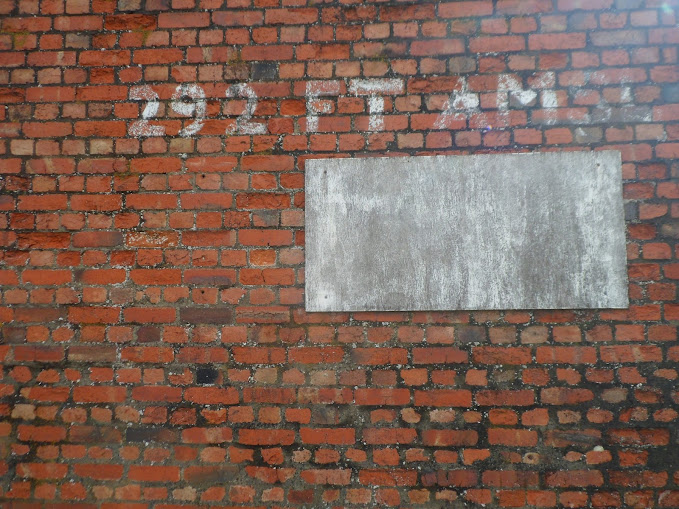







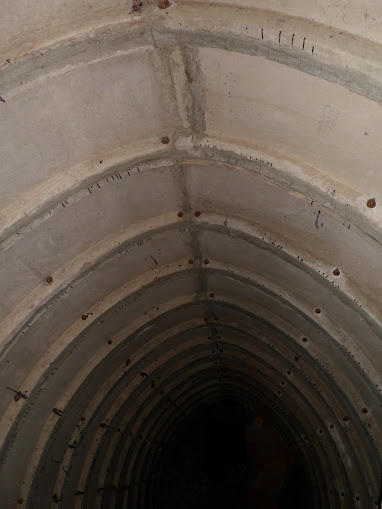

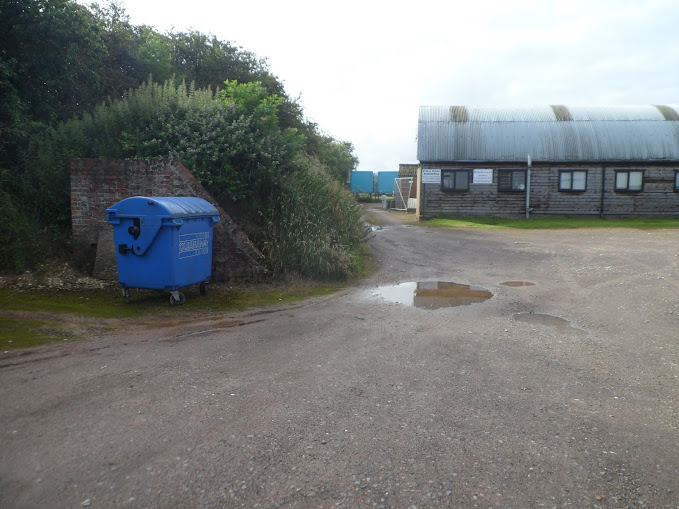











The Officers Mess to the left and the canteen block to the right.

Canteen hut on the right, Commanding Officers block on the left.








The operations block. Permission again was sought so a massive thanks to the site manager. As you will see - fully operational and the tour was unescorted.



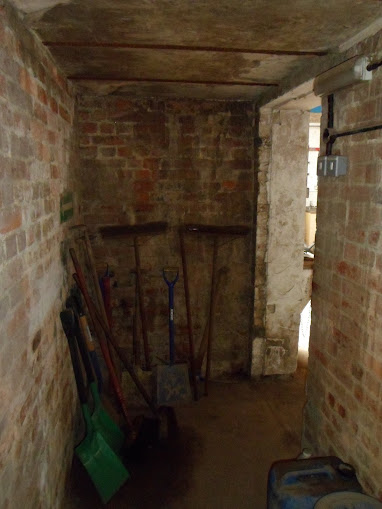












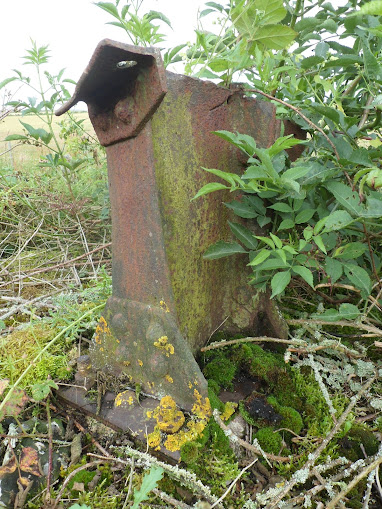




Looking North East along the perimeter track.


Looking South East along the perimeter track.

The first of the two pillboxes on the site. No classifications other than a possible Type 22




If this is the same build specification as the other pillbox in Leckford Plantation then a considerable amount of the porch and entrance is missing.



Traversing arc and traversing stops.







The Pillbox is in there somewhere!

Heading off to the east/west runway.
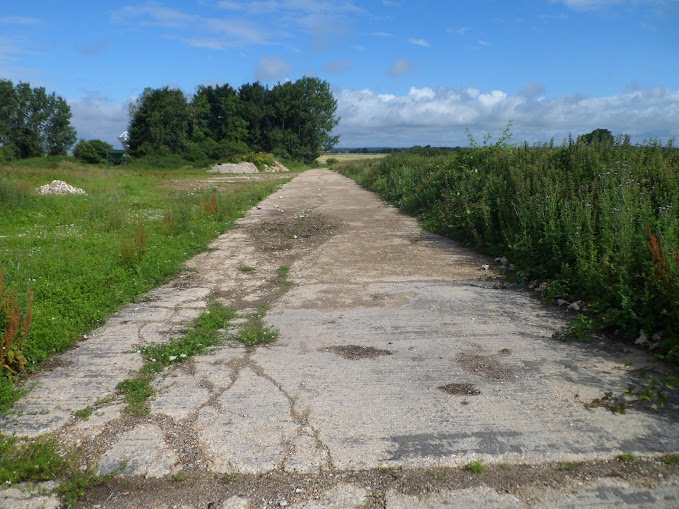



The remains of the runway. What looks like a concrete track utilised by the farmer is all that remains.








The visible shape of a building long lost. The evidence is in the moss covered are on the right of the grass island.
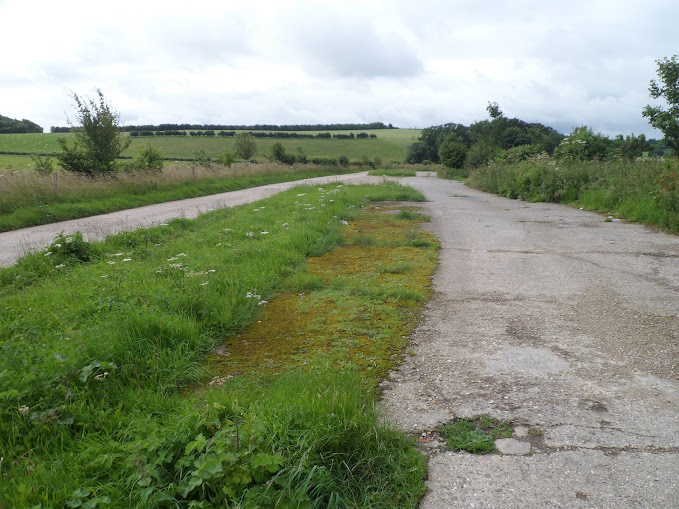
Support posts.

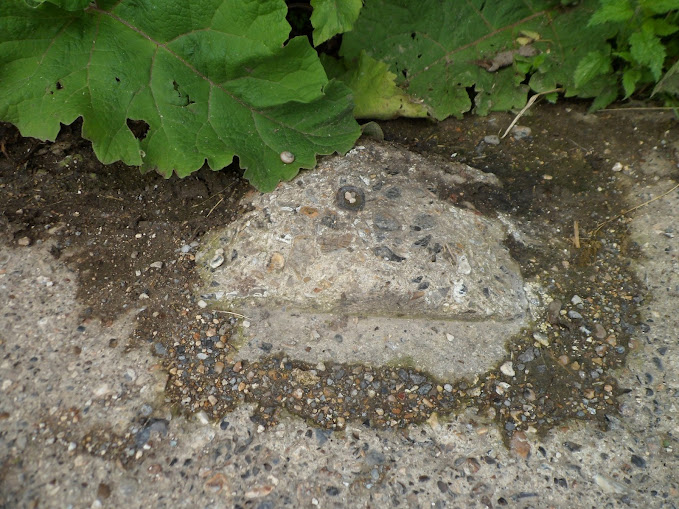




PILLBOX (TYPE FW3/22): S0012708
Sat on the edge of the existing tree line and as mentioned - high up the embankment to the plantation.



The remnants of a hinged doorway.








Can anyone shed some light on the blocks each side of the embrasure or are these just simply a variant on the pre castes?


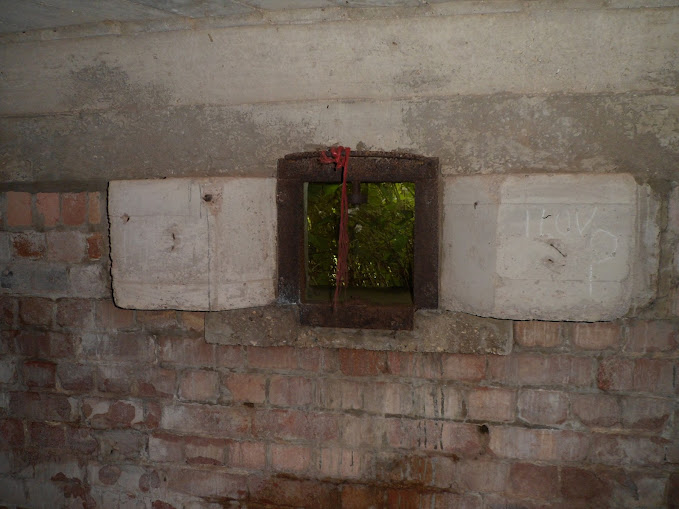




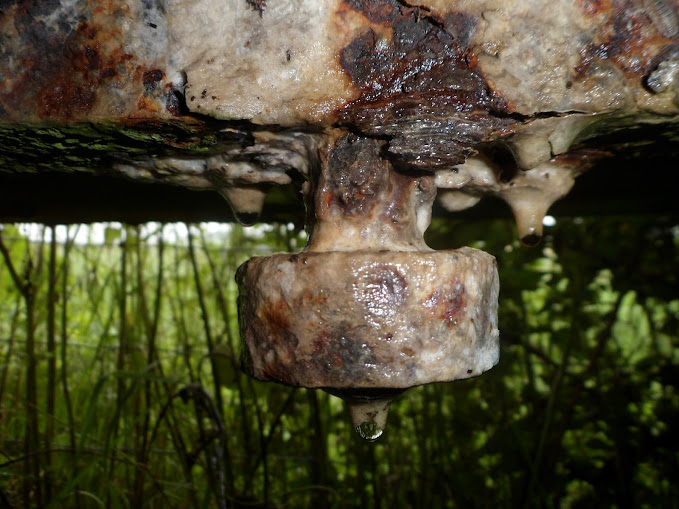

Heavy corrosion.



Heading up to the southern dispersal area where a canteen, gatehouse (removed but the base is still there), kitchen and dining room, boiler house, B1 hangar, the site of the T2 hangar (removed), and the General Purpose Hut. This is the area i need to get full permission to explore.





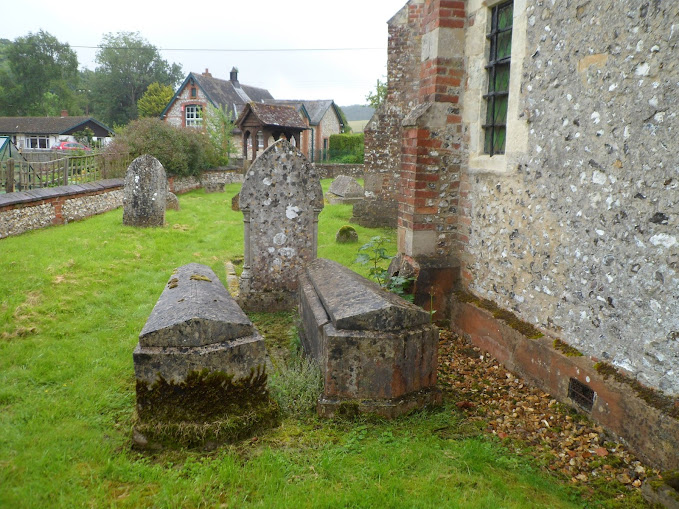


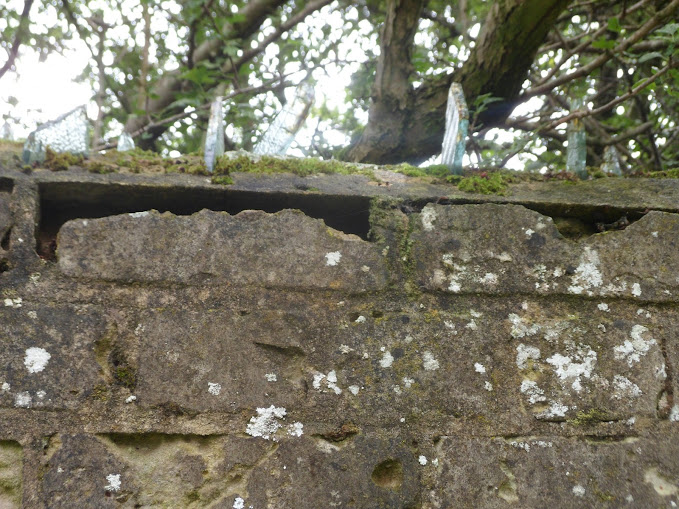
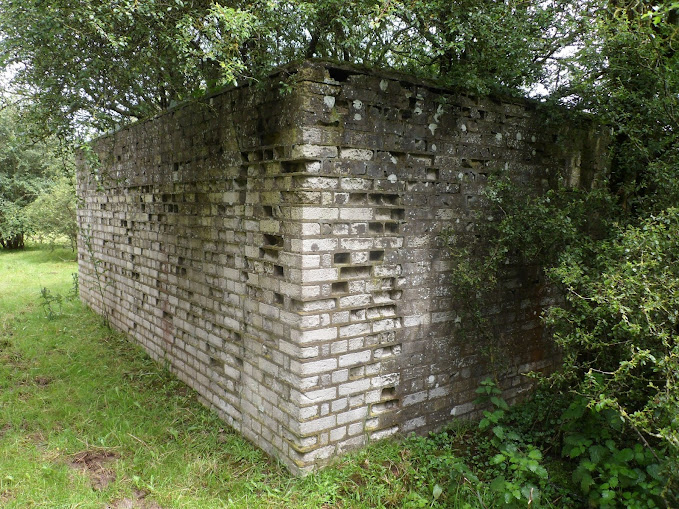

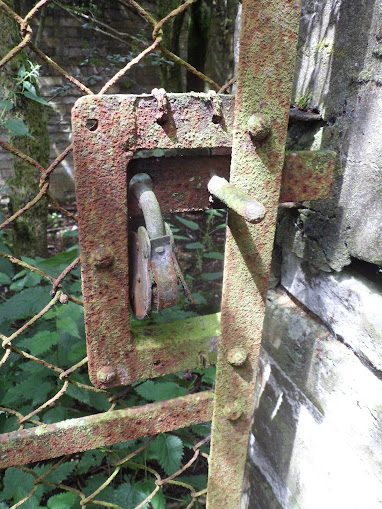





Air raid shelter. Very dry inside. The hatch for the emergency hatch had fallen through.

Picket Screw Tie.

Mount for a blackout curtain.


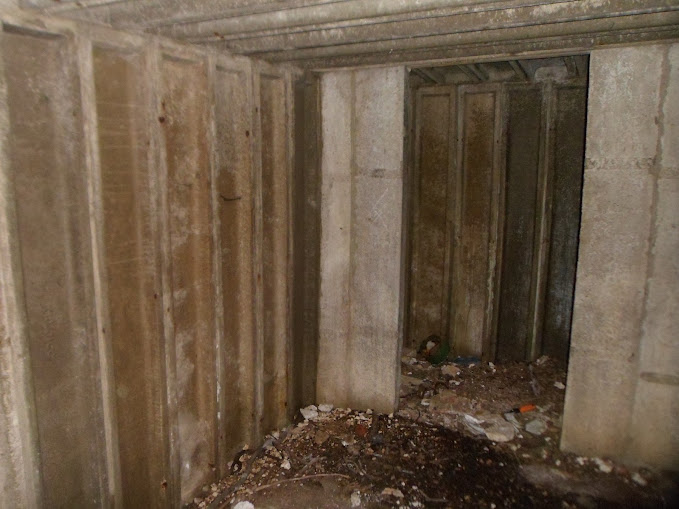







Circuit road (above) leading around to the Standby Set House, the bases to three Nissan huts, and sleeping quarters.
Standby Set House. A set house on standby to supply essential electrical services if the mains feed to the station were interrupted or broken.





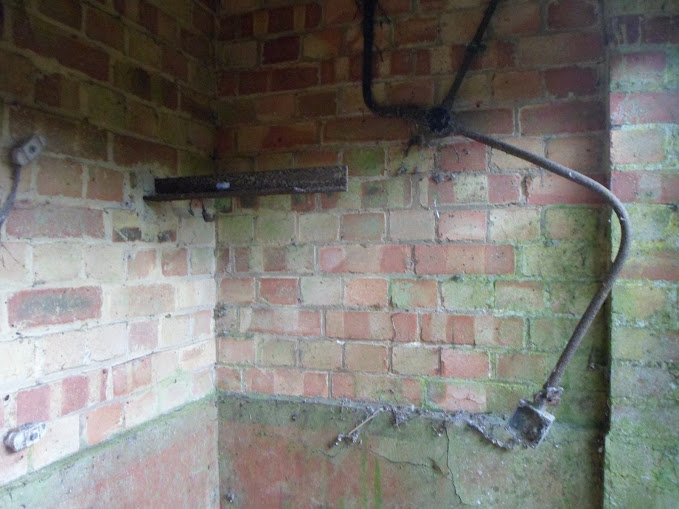





Sat behind a hedge on the public access path.

Electrical insulators.
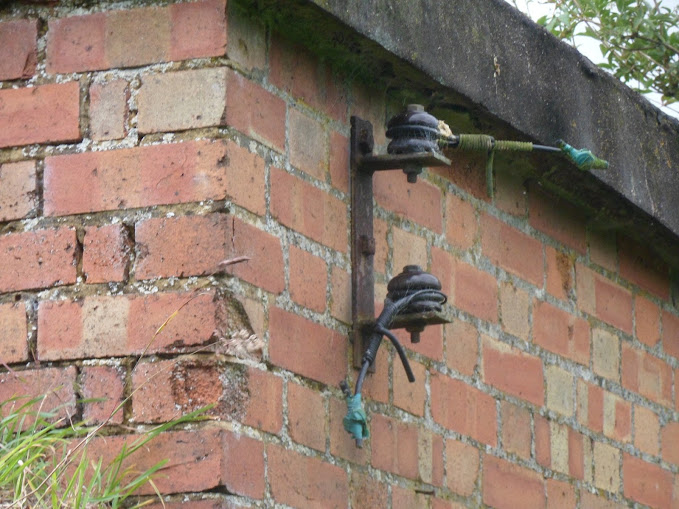

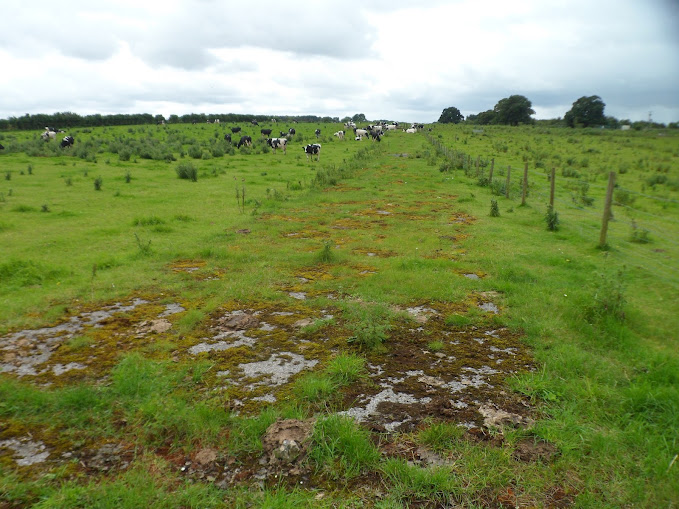

Maintenance huts (Romney type)

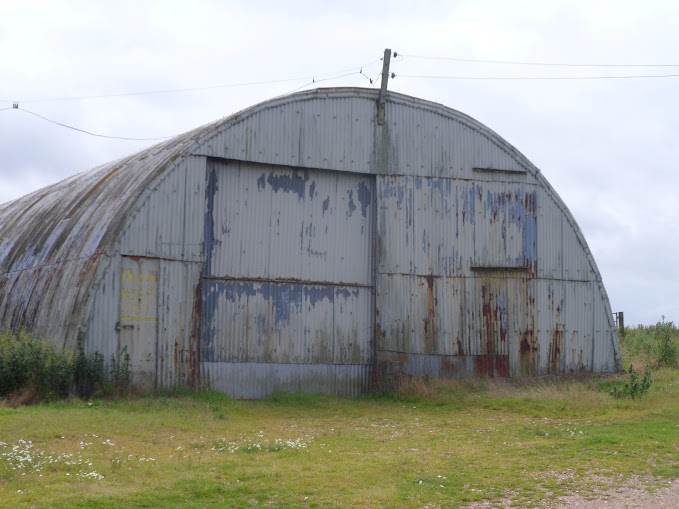

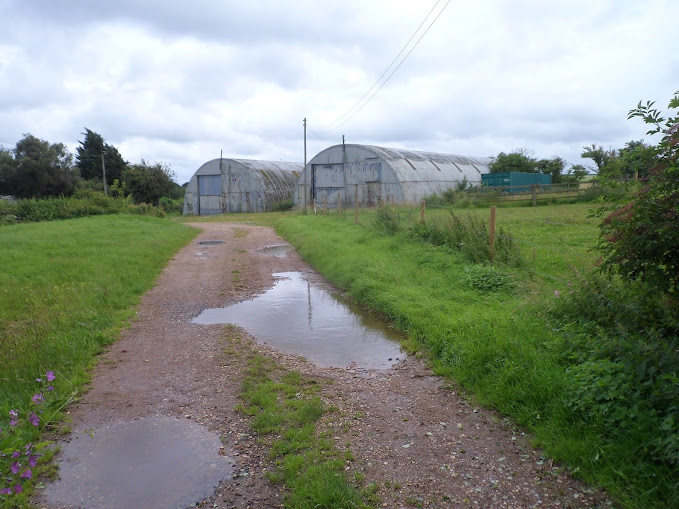


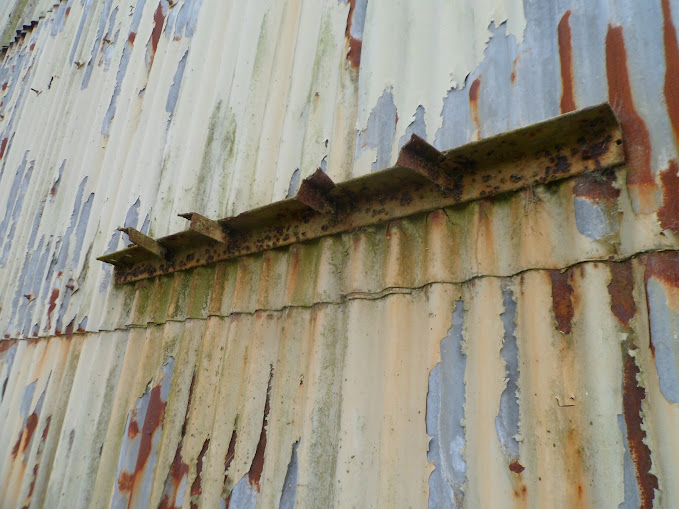





View of hut base for the flight office and rest room.


A good indication of the huts layout.

Latrine hut. Now converted into a stable.
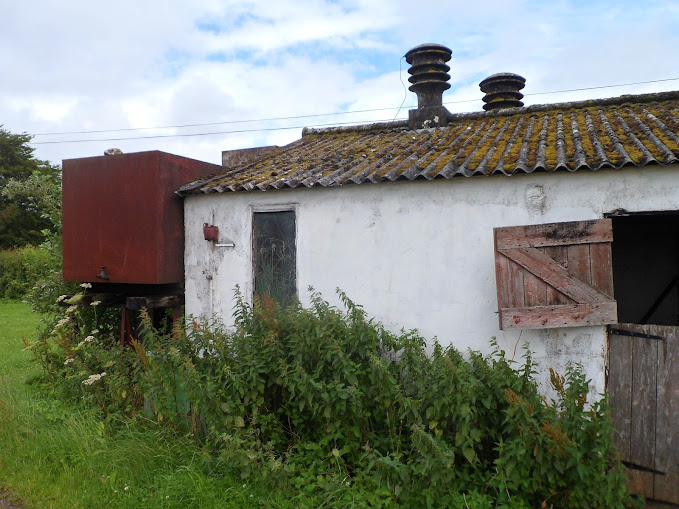




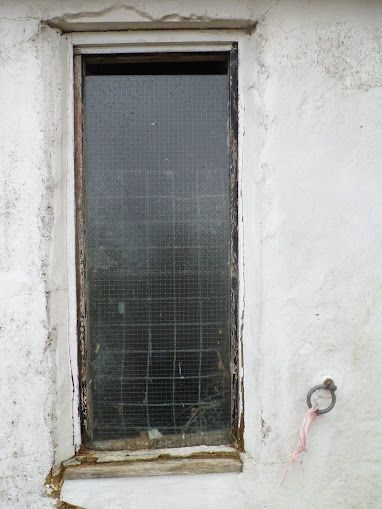



And finally !!

Thanks for viewing this report. It was a massive site with so much evidence of it's previous existence. It was a real pleasure getting out to this site but i still need permission to get to the Southern Dispersal site and fully explore. At the time of this visit, there was issues surrounding Milk Pricing and as this was a Dairy Farm it was not advisable at that time to go walking around the dairy farm without permission.
History taken from Wiki
RAF Station Chilbolton is a former World War II airfield in Hampshire, England. The airfield is located approximately 4 miles (6.4 km) south-southeast of Andover; about 62 miles (100 km) southwest of London
Opened in 1940, it was used by both the Royal Air Force and United States Army Air Force. During the war it was used primarily as a troop carrier airfield for parachutists. After the war it was used for jet aircraft testing before being closed in 1946.
Today the remains of the airfield are located on private property being used as agricultural fields.
RAF Fighter Command use
Chilbolton airfield was opened in September 1940 as a satellite of RAF Middle Wallop and was used as a relief landing ground. At first it was developed piecemeal with the addition of the necessary facilities that took it towards existence as an independent base. It then hosted its own Hawker Hurricane squadrons which took part in the Battle of Britain. RAF 238 Squadron operated throughout the Battle of Britain from Middle Wallop and St Eval as part of 10 Group RAF Fighter Command, moving to Chilbolton in September 1940 with Hurricane 1’s. During the Battle of Britain many sorties were flown covering Southampton to Bristol. Once the battle had been won and therefore the threat of invasion had passed major Luftwaffe raids ceased. Several Supermarine Spitfire & Hurricane squadrons came and went, none stayed very long. By late 1941 Chilbolton had been upgraded with the addition of a perimeter track and several fighter concrete dispersal pens around it. By November 1941 it was placed into Care & Maintenance as there was no use for it by then as the Battle of Britain had ended and there were sufficient airfields in the area to continue the war without it.
RAF Units stationed at Chilbolton:
238 Sq, Hurricane I, arrived 30 September 1940, departed 20 May 1941
Glider Pilots Exercise Unit, Tiger Moth/Master/Hotspur arrived Dec-Jan 1941
238 Sq, Hurricane IIA, arrived 1 February 1941, departed April 1941
308 Sq, Spitfire IIA, arrived 31 May 1941, departed 24 June 1941
501 Sq, Spitfire IIA, arrived 25 June 1941, departed 5 August 1941
504 Sq Hurricane IIB, arrived 11 August 1941, departed 26 August 1941
245 Sq, Hurricane IIB, arrived 1 September 1941, departed 17th Nov 1941
245 Sq, Hurricane IIB, arrived 23 Nov 1941, departed 19 Dec 1941
184 Sq, Hurricane IID, arrived 1 March 1943, departed 11 March 1943
174 Sq, Hurricane IIB, arrived 1 March 1943, departed 11 March 1943
America came into the war with the bombing of Pearl Harbor by the Japanese at the end of 1941 and the Allies began preparations for the invasion of Europe. RAF Chilbolton was eventually allocated to the United States Air Force (USAF) and played host to Army Co-operation Command units.
Overview
RAF Chilbolton Stands on a plateau 91 metres above the River Test and Chilbolton village in Hampshire.
The site had been used during the 30s by private light aircraft. In 1936 the Ministry of Works marked out the site for a prospective airfield and was ‘under construction’ in 1938. The airfield was used by RAF 11 group Hurricanes during the Battle of Britain and the RAF continued to use the airfield until it was allocated to the USAAF in November 1942. Originally the airfield consisted of three grass runways. However UK military airfields were constantly upgraded throughout WWII.
The biggest change was in Spring 1943 when RAF Chilbolton was rebuilt to British Class A airfield bomber standard, the main features were 150 ft wide hardened concrete runways, the main runway length being at least 6000 ft, to allow operation of all current and planned aircraft and at least two T2 hangars (240 feet long by 115 feet wide by 29 feet high. The existing concrete perimeter track was widened to the ‘class a standard’ width of 50 feet (15m) and made to fully encircle the runways. 48 large hardened concrete dispersal pads or hard-standing were built on the perimeter track infield, each capable of taking a large WWII bomber. A large B1 aircraft production hangar span 120 ft, length 175 ft made of steel stanchions and cladded with corrugated iron painted black with roof windows, was added next to one of the T2’s to allow for the rebuilding of seriously damaged planes by a civilian workforce. The three concrete runways were 5,400 ft (12/30), 4,814 ft (02/20) and 4,200 ft (07/25). The main runway was not able to meet the full ‘class A standard’ of 6000 ft for geographical reasons. It couldn’t be lengthened due to the pronounced slope of the land.
The ground support stations were constructed largely of Romney and Nissen huts of various sizes. The main support station, called Stonefield Park was where the group and ground station commanders and squadron headquarters and orderly rooms were located. Also on the various ground stations were mess facilities, chapel, hospital, mission briefing and debriefing, armory, life support, parachute rigging, supply warehouses, station and airfield security, motor pool and the other ground support functions necessary to support the air operations of the group. These facilities were all connected by a network of single-track support roads, mostly on preexisting straight 'drovers roads'.
There were several technical sites scattered around the airfield, the largest consisting of a B1 and T2 hangar on a self-contained site including canteen and latrines, built and run by the Ministry of Aircraft Production (MAP), using a civilian workforce and involved in repairing airframes of seriously damaged aircraft. Other technical sites were composed mostly of large Romney huts and were connected to the rest of the airfield by straight single-track roads. Here essential field maintenance to keep the aircraft airworthy, such as spark plug cleaning, propeller repairs, tyre replacement, etc. could be performed. A T2 hangar was also used for more extensive maintenance and repair. Air depot personnel performed depot-level maintenance on aircraft. The Ammunition dump was located on the south side of the airfield, outside of the perimeter track surrounded by large dirt mounds and concrete storage pens.
There were 11 dispersed accommodation sites dispersed around the airfield, mostly to the East and all well within a mile of the perimeter track, mostly using clusters of Nissen huts, but also many purpose built RAF buildings of the period such as gymnasium, squash court, decontamination building etc. The Huts were either connected, set up end-to-end or built singly and made of prefabricated corrugated iron with a door and two small windows at the front and back. They provided accommodation for 2.841 personnel, including communal and a sick quarters.
During airborne operations, when large numbers of airborne parachutists were moved to the airfield, tents would be pitched on the interior grass regions of the airfield, or wherever space could be found to accommodate the airborne forces for the short time they would be bivouacked at the station prior to the operation.
USAAF use
Chilbolton was known as USAAF Station AAF-404 for security reasons by the USAAF during the war, and by which it was referred to instead of location. Its USAAF Station Code was "CB".
5th Tactical Air Depot
During the course of this construction. Chilbolton was selected for the site of an aircraft maintenance depot and this was established on the north-east side with large Nissen and Romney buildings erected for workshops.
It was determined that the USAAF would operate six tactical air depots in the UK and the locations had already been decided before the Ninth Air Force was established in the UK. However, the conditions at one was found to be unsatisfactory for the operation of Republic P-47 Thunderbolts and it was decided to shift this depot to Chilhollun. The first USAAF personnel arrived in December 1943 and by January the 5th Tactical Air Depot, and its 10th and 86th Air Depot Groups, were in residence.
During the early months of 1944, the P-47 Thunderbolt became a very common sight in the vicinity of Chilbolton as the 5th TAD prepared new P-47s for operational units, made theatre modifications and carried out some maintenance on the type for Ninth Air Force units, major maintenance being carried out at Base Air Depot 1 (BAD 1), Burtonwood.
368th Fighter Group
On 1 March 1944 the 12th and 15th Tactical Reconnaissance Squadrons from the 67th Reconnaissance Wing, flying Spitfires and Mustangs, moved in from RAF Aldermaston to make way for a C-47 group, only to be ejected two weeks later when a new fighter group arrived, The numbers of P-47s increased dramatically on 15 March when Colonel Gil Meyers brought his 368th Fighter Group in from RAF Greenham Common which was also required for transports. At times there were more than 150 P-47s at Chilbolton, the 368th's three squadrons having a combined total of more than 70. The 368th had the following fighter squadrons and fuselage codes:
395th Fighter Squadron (A7)
396th Fighter Squadron (C2)
397th Fighter Squadron (D3)
The 368th was a group of Ninth Air Force's 71st Fighter Wing, IX Tactical Air Command. Recipient of the Presidential Unit Citation, the 368th was the highest scoring Ninth Air Force P-47 only unit with 149 victories. It was the first USAF unit to attack V-1 buzz-bomb sites, the first to use Napalm bombs and pioneered the role of pilots as forward air controllers.
The group had flown its first combat mission the day before the move to Chilbolton and armed patrols, escort and fighter-bombing missions followed, although ground attack was their primary duty. Before the launch of Operation 'Overlord' losses were light, but intensive action in early June brought an increase in the numbers of P-47s failing to return to Chilbolton. Even so, the total 12 missing in action during the 368th's stay was considerably lower than the losses of many other P-47 groups. A total of 15 enemy aircraft were credited shot down while flying from Chilbolton, the most extraordinary combat being that of Major Randall Hendricks of 397th Fighter Squadron who, in quick succession, shot down four Focke-Wulf Fw 190s he had surprised on 12 June. His fifth victory came 10 days later, making him the first post-invasion Allied ace. The Group produced two other aces: Lt. Col. Paul P. Douglas of the 396th FS (8), and Captain William Garry of the 395th FS (6).
Chilbolton was one of the two Thunderbolt bases furthest removed from the battle-front consequently, these were the groups that the Ninth Air Force earmarked for early movement to the Advanced Landing Grounds (ALGs) being carved out of farmland on the Normandy bridgehead. On 16 June the 397th FS started to use the A-3 ALG at Cardonville, thus becoming the first Ninth Air Force unit to transfer to the Continent to provide tactical air support in support of U.S. First Army. The main party of the group took up residence on 20 June, although Chilbolton was still used as a reserve base for a few days.
The 368th moved across the continent, finally winding up at Frankfurt am Main (Y-73), Germany on VE-Day. The group served with the army of occupation, being assigned to United States Air Forces in Europe. It was inactivated in Germany on 20 August 1946at Straubing, Germany.
Meanwhile, the 5th Tactical Air Depot continued to operate from Chilbolton, although its 10th ADG transferring to France in late July. The 86th ADG followed in September with most of the other units.
442nd Troop Carrier Group
Following the departure of the 368th FG to the continent, C-47s from various troop carrier groups used Chilbolton as an air evacuation station, ferrying in casualties from Normandy and taking supplies out on the flight from Chilbolton. From early September, personnel of the 442d Troop Carrier Group based at RAF Weston Zoyland moved in support equipment to Chilbolton as the airfield had been selected as an advance base for the group's participation in the airborne landings in Holland.
On 11 September the group's C-47s arrived. Carrying parachutists of the 101st Airborne Division two flights of 442nd C-47s took off for drop-zones near Veghel and Son respectively on 17 September. Both formations met heavy flak and just after the drop had been made two of the first flight's aircraft were shot down. The second flight also met fierce AAA fire with two aircraft being lost and seven others badly damaged.
The next day, two flights of 40 C-47s, each towing CG-4A Waco gliders took off, this time faring better, with only one aircraft lost in a ditching. Things did not go smoothly on the 19th when another 40 C-47s towing 40 gliders experienced considerable difficulty in bad weather and only 28 of the latter were delivered to the landing zone. Seven gliders went into the sea and two C-47s were lost. A second flight of 41 C-47s with gliders met still more problems with none of the gliders reaching the Son DZ and two C-47s lost to flak.
There was reduced effort on 20 September when 20 planes, operating from RAF Greenham Common, dropped supplies, and 12, from RAF Ranisbury dropped paratroops to the 101st Airborne. Thereafter, the group was returned to RAF Weston Zoyland having sustained one of the higher aircraft losses of all the fourteen C-47 groups taking part in 'Market'.
Chilbolton continued to be retained by the USAAF for use by transports as a staging base for cargo operations to and from the Continent and it was not returned to the RAF until March 1945 by which time most of the C-47 groups had been transferred to bases in France.
RAF Training Command
In the hands of the RAF, Chilbolton played host to a fighter Operational Training Unit - No. 41 - for the rest of World War II, and then to several different fighter squadrons equipped with Supermarine Spitfires and Hawker Tempests as the RAF reduced its strength at the end of the war.
41 OTU, Hurricane/Spitfire/Master/Martinet arrived March 1945, disbanded 26 June 1945
26 Sq, Mustang I/Spitfire XIV, arrived 23 May 1945, departed 20 August 1945
183 Sq, Spitfire IX, arrived 17 June 1945, departed 8 October 1945
247 Sq, Tempest F2/Typhoon Ib, arrived 20 August 1945, departed 7 January 1946
222 Sq, Tempest V, arrived 10 August 1945, departed 15 August 1945
54 Sq, Tempest F2, arrived 15 November 1945, departed 28 June 1946
183 Sq Tempest II, arrived 15 November 1945, disbanded 15 November 1945
[edit]Into the 'Jet Age'
In March 1946, Chilbolton became the first RAF station to operate de Havilland Vampire jets when No. 247 squadron converted to Vampire FB1's, but by the late summer that year the station was on care and maintenance.
247 Sq, Tempest F2/Vampire F1, arrived 16 February 1946, departed 1 June 1946
247 Sq, Vampire F1, arrived 12 June 1946, departed 27 June 1946
[edit]Civil use
With the facility released from military control in 1946, Vickers Supermarine selected the airfield as a base for conducting flight development programmes of their jet prototypes and development aircraft, remaining for the best part of ten years. Supermarine Attacker, Supermarine Swift and Supermarine Scimitar were developed there as well as many early experimental swept wing jet fighters. The Spitfire T Mk IXs, the very last Spitfire built, a 2-seat trainer was also flown and developed at Chilbolton to be exported to India and Eire.
Folland Aircraft moved in to the other side of the airfield to conduct similar work on their products, chiefly the Midge and Gnat, but were gone by the end of 1961. With their departure, the wartime airfield began to be dismantled, with large sections of runway, perimeter track and loop hardstands being removed for hardcore.
The next organization to take an active interest in the site was the Space Research Council which set about building an observatory with what was to become a prominent local landmark - a radio telescope, known as the Chilbolton Observatory, which was built almost in the centre of the airfield, on the wartime main runway. When constructed, the north end of the runway was removed, with a two lane access road replacing the runway and connecting to the local road network. Various other enterprises flourished or faded in the buildings on the periphery of the airfield.
Flying continued during the 1980s when helicopters and light aircraft serving a field spraying organization were in residence using a grass strip built parallel to the main north-south 12/30 runway. Today, the perimeter track has been largely reduced to a single-lane farm road as much of the airfield has been returned to agricultural use. A large section of the 07/25 secondary runway still exists, although reduced to half width. In aerial photography, however, much of the former wartime airfield's runways and hardstands can be seen as disturbances on the landscape, giving a ghostly appearance to the area.
Starting off at the private industrial site called Stonefield Park i knew this would be the best place to start from, getting there very early, asking and getting permission from an initially sceptical person and then allowed to freely wander the site. Dispersal buildings, air raid shelters, Nissan huts. There was a lot to document.






Internal of a Stanton shelter





In total there are 13 Stanton Air raid shelters in the compound. Each with sufficient capacity to hold 30 personnel.


External view of the escape hatch to a Stanton Air Raid Shelter.










Officers Mess on the right hand side.


The NAAFI



Detail of the post war extension to the huts after the roofing was replaced and asbestos was cleared from most of the site. Having spoken to a person at the site the complex is listed and minimal alterations are permitted.

The Ration Store


The NAAFI




The Ration Store






The Gym













The Latrines
















Another of the Stanton Shelters to the rear of the Decontamination block.









A Stanton Shelter placed centrally on the site.










Another entrance to one of the many Stantons.

The water tower to the rear of the kitchen/SGTs Mess





Circuit road leading to the Water Tower and the Operations Block


A standard WW2 Braithwaite water tower.









A view of the perimeter track leading to the main airfield and skirting around the site. This was to prove invaluable to me in covering such a large area.



The junction of what is now called Drove Road. This is a back crunching axle busting road leading up to the technical support hangars. The left side of the junction leads onto the perimeter track to the old airfield.













Finally back out onto the perimeter track.

Foundations to a Hangar that has long since been removed.























The crawl space to get into the pillbox.





Stood right at the end of the runway and looking towards the dispersal site. The runway is to the left in this photo.



Misc sat in the copse of trees nest to the runway.



A look back towards the end of the runway before continuing on around the perimeter track.

Continuing along the South East perimeter track i came across the three areas of the track that are part of the bomb storage area. This is where the bomb train entered the airfield circuit. This leads up to the hut which is in the next set of photos. This was either the fusing shed or a maintenance hut. There is evidence that there used to be windows but these have been bricked up. The theory that this was a maintenance hut has more credence.







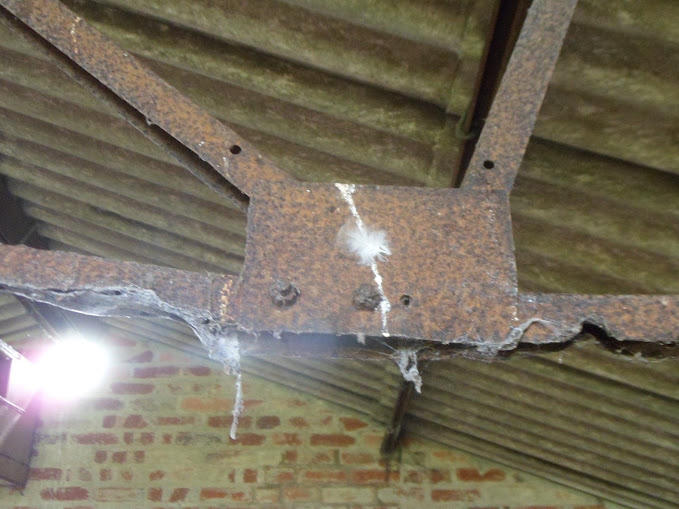





The view of the track near the bomb storage area. The storage area has been returned back to farmland.
All in all there are three areas that are recessed off the main track. This area was the (HE Fusing Point, Light & Heavy) armament. One on the left and two on the right with the track running central to all of them. Looking closely there are recessed areas that imply a building structure as there are still extent posts with reinforced steel in the centre of each. This is evident on the furthest and the middle area.








Bricked up window.





All in all there are three areas that are recessed off the main track. This area was the (HE Fusing Point, Light & Heavy) armament. One on the left and two on the right with the track running central to all of them. Looking closely there are recessed areas that imply a building structure as there are still extent posts with reinforced steel in the centre of each. This is evident on the furthest and the middle area.




Support posts.






Onto the main road to turn left and search for the pillbox sat between the access track and the southern dispersal site.
Set high up on the hill overlooking the expanse of the site is this pillbox. The entrance is South western facing and overlooks the north-south runway.PILLBOX (TYPE FW3/22): S0012708
Sat on the edge of the existing tree line and as mentioned - high up the embankment to the plantation.










The view from the top of the Pillbox offering the commanding view intended.













The entrance to the Southern dispersal area.

The boiler house is to the left of the B1 hangar.


The B1 hangar internal. This needs a real explore!

It was at this point that i chatted to a person maintaining a tractor and having a good chat he stated he had no problem with me being on the site but i should get formal permission to be on the site. Off to get this sorted out in Leckford.

The boiler house is to the left of the B1 hangar.










Carrying up further round the site and all sat next to a public access path.

Not 100% sure about this building. But it could be an electrical sub station.





This entrance gate is covered by a blast wall.




Air raid shelter. Very dry inside. The hatch for the emergency hatch had fallen through.






The escape hatch.


Back along the pathway leading to the bases of what would have been Nissan Huts.

The evidence of a huts base.

A gated access road to the site.


Circuit road (above) leading around to the Standby Set House, the bases to three Nissan huts, and sleeping quarters.
Standby Set House. A set house on standby to supply essential electrical services if the mains feed to the station were interrupted or broken.














Back around the circuit and heading back towards the runway.

Looking towards the North -South runway to the north.










A possible communications hut.



View of hut base for the flight office and rest room.











Possibly evidence of water storage towers.


Thanks for viewing this report. It was a massive site with so much evidence of it's previous existence. It was a real pleasure getting out to this site but i still need permission to get to the Southern Dispersal site and fully explore. At the time of this visit, there was issues surrounding Milk Pricing and as this was a Dairy Farm it was not advisable at that time to go walking around the dairy farm without permission.
Again - thanks for viewing.
Excellent set of photos. I live nearby and am grateful for many of the explanations of the ruined builings. A lot more grid refs would be
ReplyDeletemuch appreciated!